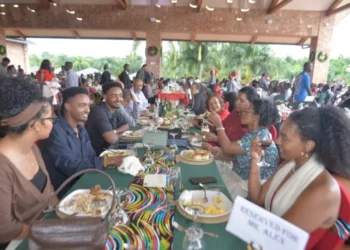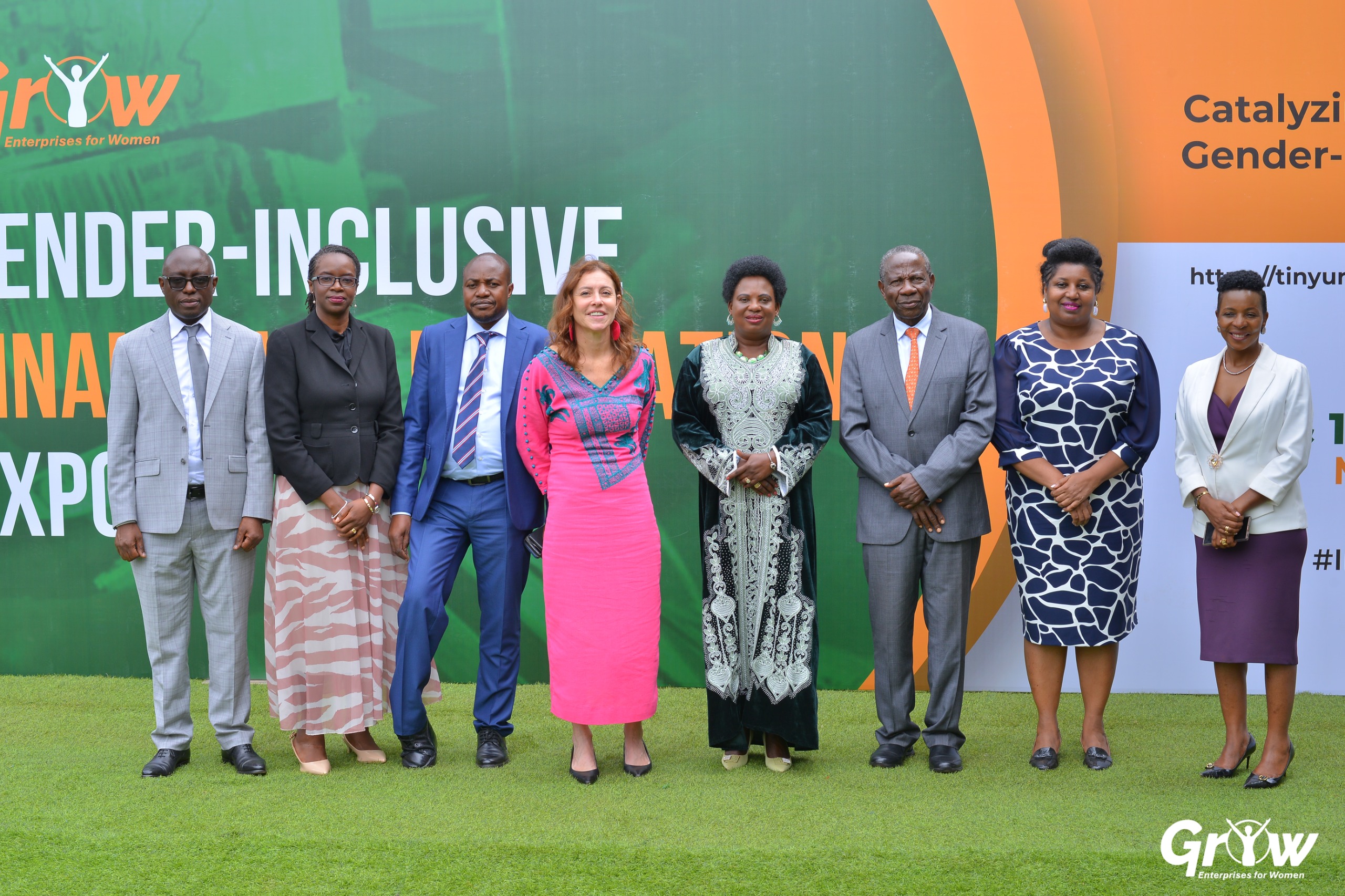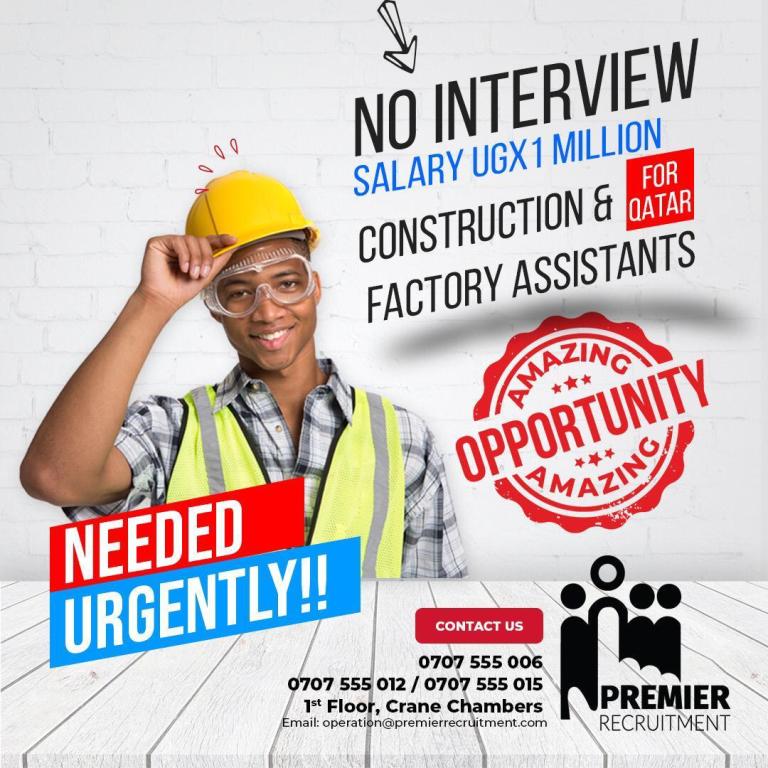By Mike Ssegawa
Chinese investor Helen Hai embodies the story of how the Chinese have made it in Africa in more than one way. In Uganda she has been invited by the government to provide expertise on how to jumpstart the country’s industrialisation process.
However, her biggest success story is in Ethiopia.
During a workshop on “Reporting Africa-China Engagements” for African and Chinese journalists in Addis Ababa, Ethiopia on 5-7 September 2017, about 20 African journalists toured Helen’s Huajian factory located in the Eastern Industrial Zone. The workshop was organised by the Wits Journalism Africa-China Reporting Project in partnership with Oxfam International’s Africa-China Dialogue Platform. Helen started her project January 2012 and, within two years, employed 3,500 Ethiopian youth; her products such as leather shoes have reached shelves in Europe and America.

When you meet Helen, it is difficult to imagine that the youthful looking Chinese lady is a high-flying leather queen, thanks to her huge investments in Ethiopia, where she runs a leather factory in one of the many mushrooming industry parks.
Helen’s story is one of the narratives African leaders and think tanks in search of models for developing the continent put to light in why partnership with China and the continent is a shot in the arm. Helen’s brick by brick story is one of the Chinese success stories now being modeled in Rwanda, Senegal and soon in Uganda. Helen is a poster girl symbolizing the slogan, “Africa is rising” on China’s back.
It is not difficult to tell why she is becoming a darling in Africa’s corridors of power; she has put her footprint in Rwanda where she has a garment factory and she will be opening shop in Senegal while contemplating another in Uganda where she is being courted by President Museveni.
Helen who is also the CEO of Made in Africa Initiative and UNIDO Goodwill Ambassador says that if African countries are to uplift their economies, they must focus efforts towards creation of jobs for the population in order to realize sustainable and industry driven inclusive growth.
Helen arrived in Africa, after meeting with visionary leader the late Meles Zenawi who invited her to work with him as an adviser. For about two decades, Meles was a leader of the highly burdened country, with a huge population that was poorly educated and ill-fed. All the resources in the country were needed to reinvent the economy after years of war, famine and dictatorships. Ethiopia was a typical description of an African country.
The continent’s ready for take-off
Years back, as a little girl, Helen narrates her favourite story which she wants to inspire African girls, her father wanted to throw for her a special birthday on turning seven. He took her to Beijing hotel (then the only five star hotel in the Chinese capital) and when he asked at the reception how much it cost a night, he was told an amount which made him cancel the special occasion for the little girl. He told her, “We cannot afford this hotel,” before he held her hand and walked out of the magnificent building. However what struck Helen was the fact that as she stepped out, she looked back at the people in the lobby and they were largely white expatriates in Beijing, possibly working in the political arena, as diplomatic corps and as high flying business executives. She left thinking that was not a place for people like her. She never returned there and never really thought about it, until a similar scenario played out in her 30s when she was in Addis Ababa and had booked in Sheraton Hotel which is one of the most prized hotel establishments of the fast growing Ethiopian capital.


One evening while at the hotel, she heard music being played at the bar, which was called The Office. She followed it, only to find the expatriate community of Addis, a privileged club of elite, no locals in the group, enjoying the music at the exclusive bar. She recalled that sad encounter in Beijing three decades ago, and thought to herself, “There are many girls in Ethiopia who believe Sheraton is not their place and will never step there.” That was the day she dedicated herself to creating a new crop of entrepreneurs in Ethiopia. A crop that can see Sheraton as a normal place. A part of Ethiopia. It is such a tall order. However, like the Chinese saying goes, “A journey of a thousand miles starts with a single step”. Helen has already started walking. She now boosts of a shoe factory at the Eastern industry park where she employs more than 3,000 people. Another industry park she is constructing in Addis Ababa at a tune of $1 billion will employ between 30,000 and 50,000 people on completion. According to the plan, this industry park will export volumes worth $2 billion a year. The Ethiopian leather is flying off the shelves, and she is concentrating on export, which is an Ethiopian economic strategy.

What Uganda can learn from Ethiopia
Uganda has set aside its own industry parks in Namanve and Mbarara on Jinja road, as well as Lwera on Masaka Road and in Nakaseke. More parks are expected in Mbale in eastern Uganda.
While Uganda might look at Ethiopia and wonder what they are doing right, an article in the September issue of Selamta, an in-flight magazine of Ethiopia’s successful airline, explains why this once the poorest of the poor countries on the continent is emerging as the next “Vietnam”.
Henok Assefa, managing partner, Precise Consult titled the article “Ethiopia: An emerging manufacturing hub and a model for Africa”.
He starts by saying, “Like China 40 years ago and Vietnam 15 years ago, Ethiopia is fast becoming the new home of the world’s light manufacturing industries.” Assefa says the World Bank predicts Ethiopia will be the fastest growing nation in 2017, in contrast to the worrying “situation on the continent” after 2016 saw Africa’s average GDP per capita fall for the first time in more than 10 years as oil and commodity prices pose a dark outlook for the future.
Countries such as Uganda, with one of the youngest population on earth (49% of the population under 15) need a new model to build job-creating sectors. As for Ethiopia, said to be a strict adherent to principles of strategy, it has mapped out its comparative advantages and competitiveness in the global market, its focus therefore on light industries specializing in apparel and leather industries, buoyed by its animal populations as well as its cheap labour.
The country has also achieved food sufficiency after it produced more than 300 million quintals of cereals in 2016. On the front of the energy sector, Ethiopia has some of the highest power supplies on the continent, in fact, the Selamta article says it is the second largest producer of power in sub Saharan Africa. The controversial dam on the Blue Nile will be producing unprecedented 6000MW, and has set the lowest cost of energy for industries anywhere in the world.
Lastly, Ethiopia’s transport infrastructure has opened up the country to the global supply chain. While Ethiopian Airlines is world acclaimed after it has been flying for the past 50 years, the airline is one of the most dominant on the continent, and has direct flights to big US, Europe and Asian cities including New York, London, Shanghai, Guangzhou and New Delhi among others, giving it access to more than 100 destinations across the globe.
In addition, the government is working in partnership with the Chinese government to build a backbone of a road network amounting to 110,414km in 2015 making an average Ethiopian living or working only 1.7km away from an all-weather road, and therefore near the supply chain.
More so, the talk of the town is the railways improving movements of people in the city, and also opening up the landlocked country to the seaport in Djibouti. It is this kind of narrative that is touted as one to help open up Africa and give the continent a chance to see better days.
Ethiopia is riding on the back of China to become the bedrock of light manufacturing as it follows to the letter its export strategy. By 2030, Ethiopia wants to export $30 billion worth of textile and apparel products, and Helen’s work in leather is playing a key role in bringing to fruition this ambition.
Africa needs many Chinese Helens for inspiration
The African continent has registered some growth but a lot still holds it back particularly high youth unemployment, imbalance of trade and lack of foreign direct investment amidst other social and economic bottlenecks.
In the midst of diverse opinions on how to fast track Africa development, China has offered Africa a warm handshake which leaders at the continent have embraced.
“What you have seen is only a tip of the iceberg,” said Ambassador Kuang Weilin, the Head of Chinese Mission and China’s top diplomat at the imposing African Union headquarters in Addis Ababa, which the Chinese funded at $200 million.
China engagement in African development is manifested in its burgeoning economic interest; the resource sector and market framed in the South-South Development Cooperation.
Kuang said China looks at principles of “equality, mutual support and benefit,” and it is this language most African leaders want to hear as the Red Dragon pumps money into Africa’s infrastructure developments such as roads, railways, electricity and information technology.
According to the Oxfam International report launched at Sheraton Hotel Addis Ababa on September 5, between 2000 and 2014, trade between Africa and China jumped from $10bn to $215bn. While Chinese FDI grew from $500m to $32bn between 2003 and 2014. And in the wake of the financial meltdown in the West, China has become very active in providing economic cooperation and aid to Africa.
The Forum on China-Africa Cooperation (FOCAC) has become the principal mechanism for cooperation articulating the strategic vision for Africa China relations which now extends dimension to peace and security, and infrastructure development as seen in roads, railways and dams constructions across the continent.
Africa has set for itself an ambitious plan, the Vision 2063, which is a continental blueprint to guide the countries to achieve development aspirations. However, there are also international plans such as the Sustainable Development Goals (SDGs) and FOCAC, which are road maps which can help streamline funding priorities.
Chinese investors with real interest in Africa’s growth and development such as Helen can pave the way for African entrepreneurs in the near future. And for economic barriers tying Africa to bonds on poverty, Helen says poverty is broken by jobs. “The fundamental of job creation is economic growth” and that is why the “willingness of the government to attract foreign investors in very important”, she emphasizes.

Yet, Helen does not stop there, she adds that African countries need “to recognize the current barriers and be willing to break them”. This is what has made Ethiopia stand out of the crowd.
Do you have a story in your community or an opinion to share with us: Email us at editorial@watchdoguganda.com












